CANTALOUPES
We farm in one of the best growing areas of cantaloupes in the world. Our harvest season spans the months of July-October. Cantaloupe seeds are planted beginning in late March. Cantaloupes are picked, packed, and palletized for shipment on a moving platform right in the field. This allows for maximum freshness and minimizes handling. The boxes of fruit are then taken to a cold storage facility where they are chilled and loaded for shipment on refrigerated trucks. They can be found in many of the best grocery stores across the nation.
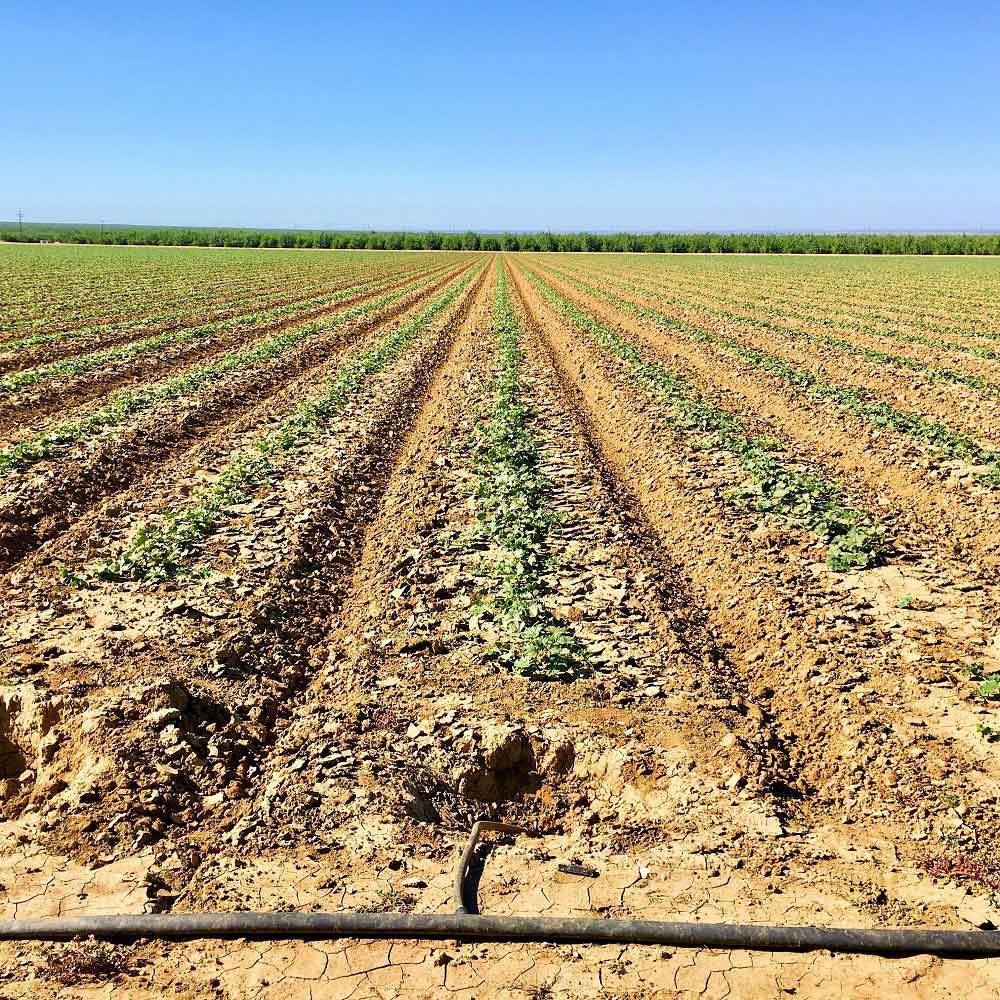
This is a cantaloupe field that is 6 weeks old, about halfway to maturity. Traditionally, fields are irrigated by flowing water through furrows between the rows of melons. Now, all our fields of are irrigated by drip irrigation. Our irrigation water comes from reservoirs in northern California through rivers and canals of the Central Valley Project. Water is an expensive and precious resource on our farm. Most crops in California are grown by irrigated agriculture. There are more than two hundred commercial crops grown in this state.
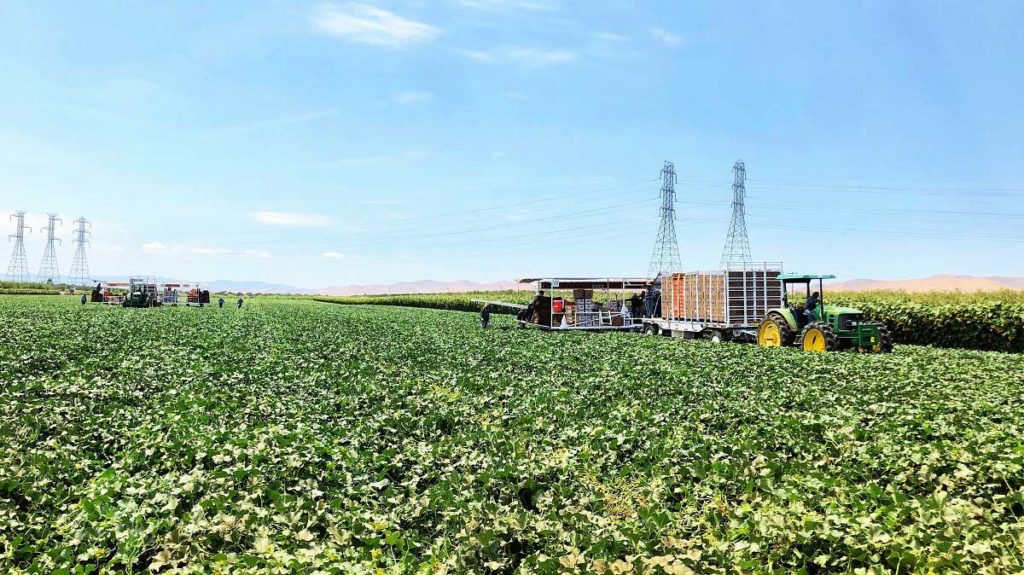
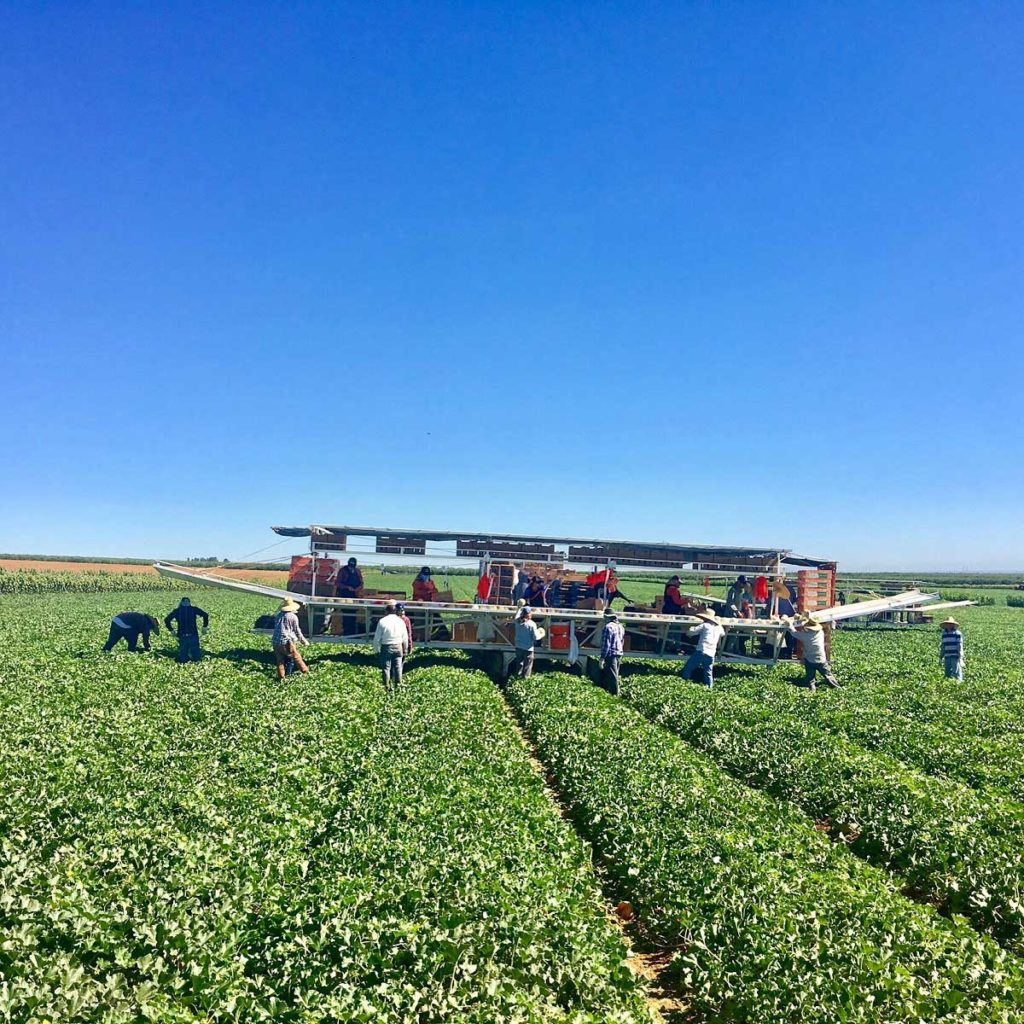
Here are a crew harvesting cantaloupes. The workers in the foreground pick the ripe melons from the vines and place them on the packing table. Standing on the moving platform are people packing the melons in cardboard boxes. The boxes are sent by roller conveyor to a flatbed trailer where two people stack and palletizing them. The whole operation is pulled by a tractor. Many of our fresh produce crops are highly labor intensive. Our cantaloupe harvest operation hires over 500 people seasonally.
ORGANIC CANTALOUPES AND HONEYDEWS
We have been growing organic cantaloupes and honeydews since 2004. Crops and products that are certified organic must conform to strict rules. First, the land to be planted must not have any applications of restricted pesticides or synthetic fertilizers for at least three years prior to certification. A detailed organic system plan must be designed and implemented. Inputs for fertility and pest control must be natural, approved organic products. An organic farmer must take many precautions to prevent contamination from outside sources, and in transit to market. All produce must be able to be tracked from field to buyer or buyer to field. Yearly our farm is registered with the state of California, and it is certified by California Certified Organic Farmers http://www.ccof.org/. We take extreme care in adhering to all these practices so that our organic melons are purely organic.


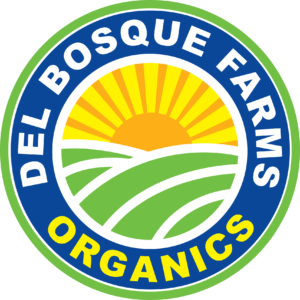
We are very proud of our organic melons, and we know that you will enjoy them. Our labels are:

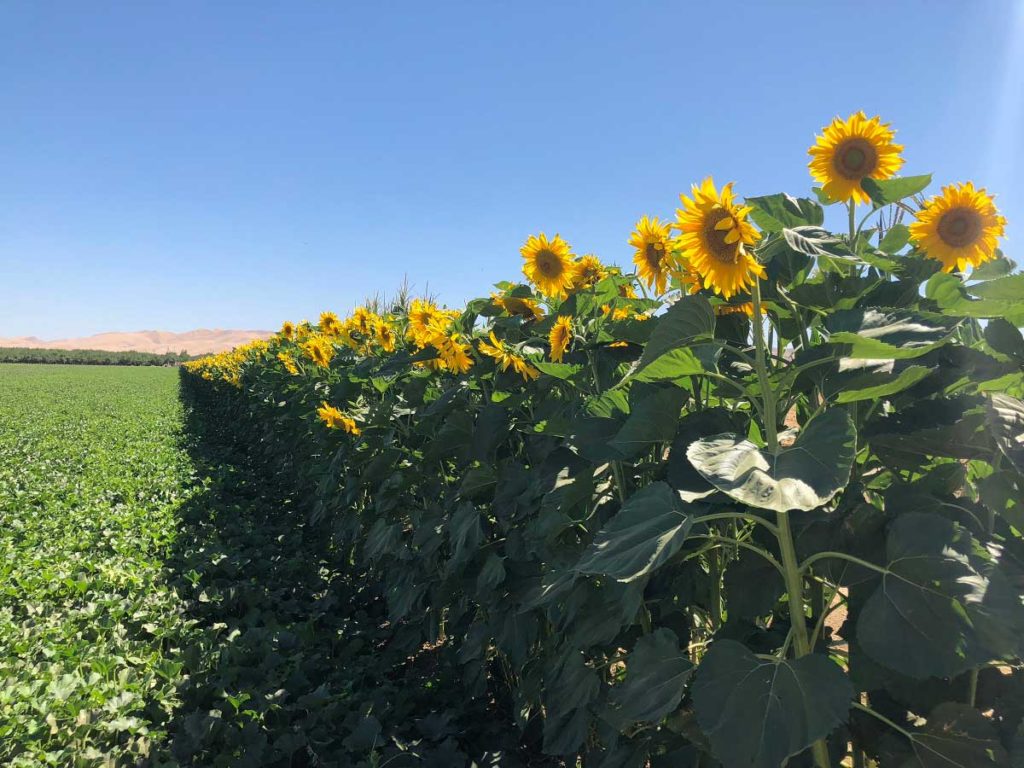
This is a view of one of our organic cantaloupe fields with a hedgerow of sunflowers on the right and the Coastal Range in the background. Our San Joaquin Valley is about 60 miles inland from the Pacific coast. The Coast Range blocks some of the marine colds and allows the valley to get very warm. The summers are hot and dry with average high temperatures in the 90s and lows in the 60s. The winters are cold and wet, but we only receive an average of about 8 inches of rainfall per year. The climate of the San Joaquin Valley is perfect for many fruits, vegetable, and nut crops.

We plant hedgerows of sunflowers that provide a habitat for beneficial insects that help control pests. The adults of many beneficial insects feed on nectar from flowers while their young, or larvae, are predaceous, feeding on pests such as aphids and caterpillars. Additionally, to help tip the balance in our favor, we purchase and release beneficial insects in our fields, including ladybugs, lacewings, and parasitic wasps.
ASPARAGUS
While our area is not the major asparagus growing region of California, it produces some of the best in the country. Asparagus, a member of the lily family, is a perennial plant, meaning that it has a long life span of multiple years. Our fields produce for about 10 years. There are three stages of growth. The plants thrive as a bush, or “fern” from late spring until fall. When the plants senesce (turn color and dry like leaves in the fall), we shred the above ground brush. For the next three or more months during winter, the ground is bare, with the crowns, underground parts of the plant that store carbohydrates, in dormancy. As the ground warms in spring, the crowns initiate their shoots that emerge through the soil as spears. When the spears attain a length of more than nine inches above the soil, they are harvested. Harvesting is done by hand, with a worker cutting the spears below the ground level with a knife and collecting them in bins. The crowns continually push spears from beneath the soil for the next two or more months, usually March through May. Harvesting continues every day during that season. Spears can grow up to two or more inches in a day. At some time in the late spring when the temperatures are very warm, we terminate harvesting. The spears are allowed to grow again becoming a fern, beginning another cycle.

Our asparagus is packed at Mizuno Resources in Manteca, CA. The product comes in from the field in trays. They are washed, sorted by size, trimmed, and packed in many different types of boxes as preferred by our customers. Most of our asparagus is shipped domestically, but some are exported to Europe and Asia. JMB International is the sole sales agent of our asparagus. Click on the link, California Asparagus Commission http://www.calasparagus.com/, for more information and some great recipes for this delicious vegetable.
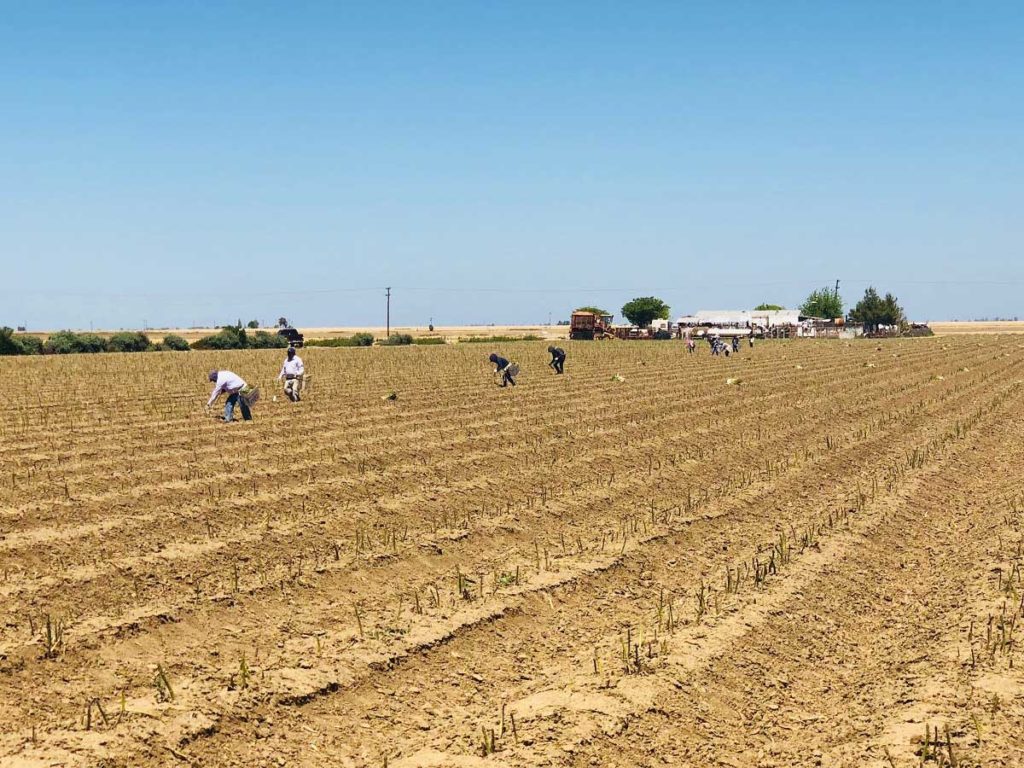
Here is our crew harvesting asparagus in spring. The spears can be seen in the foreground, appearing like sticks standing above the soil. They are very tender, fragile and must be handled with a lot of care. Harvesting is hard work stooping and cutting the spears. This is the only way that asparagus can be harvested to the discriminating standards of our market. We as consumers should all appreciate the labor force that puts our fresh food, that we enjoy so much and is so good for us, on our table.
ALMONDS
Almonds grow on trees that can produce for over twenty years. The trees bloom in the spring. Each flower grows into a fruit. The fruit is actually a hull, or thick skin, covering a hard shell which contains the nut, or meat. The trees are mechanically harvested in the late summer. First, a shaker grabs the trunk of the tree and gives it a vigorous shake for a few seconds until the nuts fall to the ground. Next, another machine sweeps the nuts into a row. Finally, a third machine picks the nuts off the ground. The nuts loaded in trailers are taken to a “huller” where the hulls and shells are removed, leaving the bare nuts. In the fall, the almond trees, being deciduous, lose their leaves. They are dormant until spring when the cycle starts over again. Almonds are a very important crop for California. About 70% of the state’s production is exported, making almonds California’s number one agricultural export crop. The value of almond exports is greater than the next three agricultural exports combined. Almonds have been proven to be a very healthy food. The American Heart Association has come out with interesting research to support this.
For nutritional information, click on the link, Almonds Are In! http://almondsarein.com/.

It is spring in this picture. Each blossom can potentially produce a nut. Not visible are the millions of bees that are at work pollinating the flowers. Without this beneficial insect, we would not have many of our fruits and nuts. California is the only state in our nation where almonds are commercially grown. A large majority of our production is exported, and most of those go to Europe where almonds are very popular.